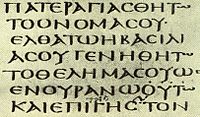
Mark 11 is the eleventh chapter of the Gospel of Mark in the New Testament of the Christian Bible, beginning Jesus' final "hectic" week, before his death as he arrives in Jerusalem for the coming Passover. It contains the stories of Jesus' entry into Jerusalem, his cursing of the fig tree, his conflict with the Temple money changers, and his argument with the chief priests and elders about his authority. Biblical commentator Christopher Tuckett notes that "the Passion narrative in Mark is usually adjudged to start at chapter 14, but there is a real sense in which it can be said to start ... at the start of chapter 11".

Luke 24 is the twenty-fourth and final chapter of the Gospel of Luke in the New Testament of the Christian Bible. The book containing this chapter is anonymous, but early Christian tradition uniformly affirmed that Luke the Evangelist composed this Gospel as well as the Acts of the Apostles. This chapter records the discovery of the resurrection of Jesus Christ, his appearances to his disciples and his ascension into heaven.

Matthew 13 is the thirteenth chapter in the Gospel of Matthew in the New Testament section of the Christian Bible. Verses 3 to 52 of this chapter form the third of the five Discourses of Matthew, called the Parabolic Discourse, based on the parables of the Kingdom. At the end of the chapter, Jesus is rejected by the people of his hometown, Nazareth.

Luke 10 is the tenth chapter of the Gospel of Luke in the New Testament of the Christian Bible. It records the sending of seventy disciples by Jesus, the famous parable about the Good Samaritan, and his visit to the house of Mary and Martha. This Gospel's author, who also wrote the Acts of the Apostles, is not named but is uniformly identified by early Christian tradition as Luke the Evangelist.

Matthew 26 is the 26th chapter of the Gospel of Matthew, part of the New Testament of the Christian Bible. This chapter covers the beginning of the Passion of Jesus narrative, which continues to Matthew 28; it contains the narratives of the Jewish leaders' plot to kill Jesus, Judas Iscariot's agreement to betray Jesus to Caiphas, the Last Supper with the Twelve Apostles and institution of the Eucharist, the Agony in the Garden of Gethsemane and the subsequent vindication of Jesus' predictions, of betrayal by one of the twelve Apostles, and that he will, in the Denial of Peter, be disowned by his closest follower, Saint Peter.

Matthew 9 is the ninth chapter of the Gospel of Matthew in the New Testament and continues the narrative about Jesus' ministry in Galilee as he ministers to the public, working miracles, and going through all the cities and towns of the area, preaching the gospel, and healing every disease. This chapter opens with Jesus back in "his own town", i.e. Capernaum.
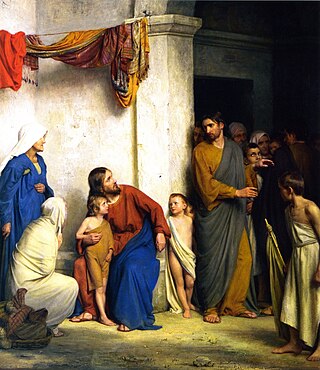
Chapter 18 of the Gospel of Matthew contains the fourth of the five Discourses of Matthew, also called the Discourse on the Church or the ecclesiastical discourse. It compares "the greatest in the Kingdom of Heaven" to a child, and also includes the parables of the lost sheep and the unforgiving servant, the second of which also refers to the Kingdom of Heaven. The general theme of the discourse is the anticipation of a future community of followers, and the role of his apostles in leading it.

Matthew 20 is the twentieth chapter in the Gospel of Matthew in the New Testament of the Christian Bible. Jesus continues his final journey through Perea and Jericho, heading towards Jerusalem, which he enters in the following chapter.

Matthew 22 is the twenty-second chapter in the Gospel of Matthew in the New Testament section of the Christian Bible. Jesus continues his final ministry in Jerusalem before his Passion. Teaching in the Temple, Jesus enters into debate successively with the Pharisees, allied with the Herodians, the Sadducees, and a lawyer, ultimately silencing them all.
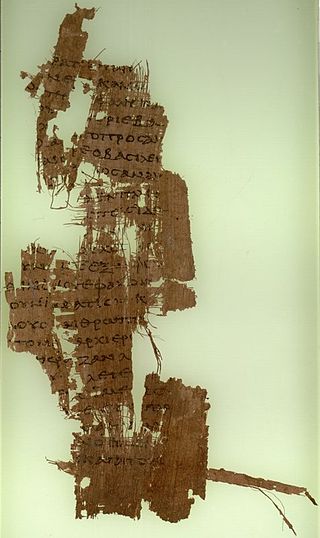
John 19 is the nineteenth chapter of the Gospel of John in the New Testament of the Christian Bible. The book containing this chapter is anonymous, but early Christian tradition uniformly affirmed that John composed this Gospel. This chapter records the events on the day of the crucifixion of Jesus, until his burial.

Luke 5 is the fifth chapter of the Gospel of Luke in the New Testament of the Christian Bible, traditionally attributed to Luke the Evangelist, a companion of Paul the Apostle on his missionary journeys. The chapter relates the recruitment of Jesus' first disciples and continues to describe Jesus' teaching and healing ministry. Early criticism from the Jewish religious authorities is encountered as the chapter progresses.

Luke 8 is the eighth chapter of the Gospel of Luke in the New Testament of the Christian Bible. The book containing this chapter is anonymous but early Christian tradition uniformly affirmed that Luke the Evangelist, a companion of Paul the Apostle on his missionary journeys, composed both this Gospel and the Acts of the Apostles. This chapter mentions the women who supported Jesus and records some of the great miracles he performed, as well as several parables told by him.
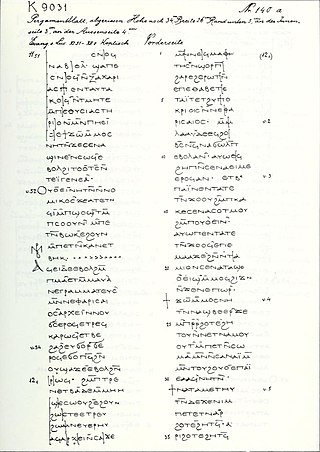
Luke 12 is the 12th chapter of the Gospel of Luke in the New Testament of the Christian Bible. It records a number of teachings and parables told by Jesus Christ when "an innumerable multitude of people had gathered together", but addressed "first of all" to his disciples. The book containing this chapter is anonymous, but early Christian tradition uniformly affirmed that Luke the Evangelist composed this Gospel as well as the Acts of the Apostles.

Luke 14 is the fourteenth chapter of the Gospel of Luke in the New Testament of the Christian Bible. It records one miracle performed by Jesus Christ on a Sabbath day, followed by his teachings and parables, where he "inculcates humility ... and points out whom we should invite to our feasts, if we expect spiritual remuneration". The book containing this chapter is anonymous, but early Christian tradition uniformly affirmed that Luke the Evangelist composed this Gospel as well as the Acts of the Apostles.

Luke 16 is the sixteenth chapter of the Gospel of Luke in the New Testament of the Christian Bible. It records the teachings and parables of Jesus Christ, including the account of the "rich man and Lazarus". There is an "overriding concern with riches" in this chapter, although other topics are also covered. The book containing this chapter is anonymous, but early Christian tradition uniformly affirmed that Luke the Evangelist composed this Gospel as well as the Acts of the Apostles.
Luke 18 is the eighteenth chapter of the Gospel of Luke in the New Testament of the Christian Bible. It records the teachings and a miracle of Jesus Christ. The book containing this chapter is anonymous, but early Christian tradition uniformly affirmed that Luke the Evangelist composed this Gospel as well as the Acts of the Apostles.

Luke 19 is the nineteenth chapter of the Gospel of Luke in the New Testament of the Christian Bible. It records Jesus' arrival in Jericho and his meeting with Zacchaeus, the parable of the minas and Jesus' arrival in Jerusalem. The book containing this chapter is anonymous, but early Christian tradition uniformly affirmed that Luke the Evangelist composed this Gospel as well as the Acts of the Apostles.
Luke 20 is the twentieth chapter of the Gospel of Luke in the New Testament of the Christian Bible. It records the teaching of Jesus Christ in the temple in Jerusalem, especially his responses to questions raised by the Pharisees and Sadducees. The book containing this chapter is anonymous, but early Christian tradition uniformly affirmed that Luke the Evangelist composed this Gospel as well as the Acts of the Apostles.

Luke 21 is the twenty-first chapter of the Gospel of Luke in the New Testament of the Christian Bible. It records the observations and predictions of Jesus Christ delivered in the temple in Jerusalem, and his exhortation "to be watchful". The book containing this chapter is anonymous, but early Christian tradition uniformly affirmed that Luke the Evangelist composed this Gospel as well as the Acts of the Apostles.
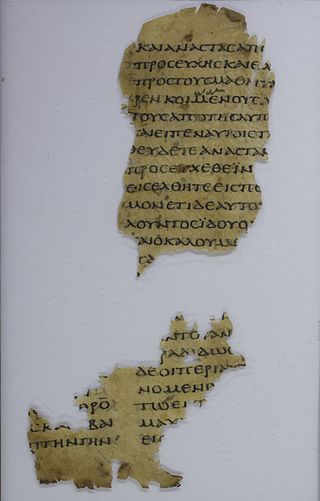
Luke 22 is the twenty-second chapter of the Gospel of Luke in the New Testament of the Christian Bible. It commences in the days just before the Passover or Feast of Unleavened Bread, and records the plot to kill Jesus Christ; the institution of the Lord's Supper; and the Arrest of Jesus and his trial before the Sanhedrin.

